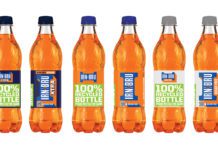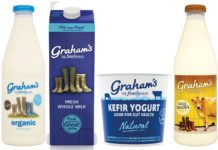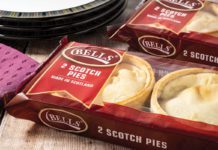
LESLEY Ann Gray, strategic lead for Scotland at market research company Kantar – which provides the listing of the top 50 Scottish non-alcohol brands in Scotland and the top 10 Scottish alcohol brands in Scotland, analyses the year for the leading Scottish brands in Scottish food and drink retailing.
THE last few months have shown us that, no matter how disruptive we think the impact of the pandemic was, the grocery market has become even more volatile.
As I write this, food inflation is at 14.7% and is predicted to grow further. It is now at a record high since Kantar began tracking prices during the 2008 financial crash.
Shoppers are doing all they can to manage their household spend but some categories – such as milk, butter, dog food, frozen potato products, fresh poultry, eggs, crisps, bread – are all inflating above 17%.
These cost prices combined with the disruption in supply as the war in Ukraine continues mean the average household is facing a jump of £682 in their annual grocery bill to £5,304 if they still buy the same items.
For this edition, we compile a list of the top Scottish brands in Scotland, ranked by value. Given the current market conditions, cost pressures and the relentless and repetitive cost price increases that they have had to negotiate, they all deserve congratulations for making it into the list.
This year, we have seen nine brands retain the same position, 16 brands move down the ranks and 23 increase their position. We also have four new entries, with Lees, Simmers, Grant’s and Harbour Smokehouse all appearing. A special call out goes to Orkney Cheddar, which moved up the most number of places from 41 to 34.
Although the top 10 remain the same, it would be easy to underestimate just how difficult it has been for them to maintain their position.
Opportunities for the convenience channel
Looking back, the grocery market has continued to change and surprise. Despite the online channel offering perhaps one of the most controlled ways to do a grocery shop, we have seen it level out at 12% of value share, dominated mainly by large basket spend.
This provides an opportunity within convenience and the high street for the top-up shop. The convenience channel is also benefiting from an increase in shop visits as it presents a way to manage spend on a smaller but more frequent basket.
The easiest way for shoppers to manage their spend regardless of where they shop is to buy less volume and basket sizes are already 7% lower than last year.
For brands, that is the challenge they are facing – how can their products continue to be chosen and remain in those baskets? In the last recession, many brands were able to promote to keep their products attractive.
This time around, promotions do not offer the same option as there are less products sold on deals than in previous years, as a low-price strategy is part of every retailer’s mantra – whether that is price-matching everyday items to the discounters or ensuring that it is available as part of a joint business plan.
Changing shopper behaviours
For shoppers, one of the behaviours that we are starting to see is a move away from brands towards own-label equivalents. This creates immense pressure on brands to communicate why they are worth the extra cost.
This movement is also down the own-label tiers, with the biggest percentage increase coming from retailers’ value own-label tier.
During 2023, the ability for brands to have a clear positioning and to offer shoppers entry level to their brand at a competitive market price will be a key part of their growth strategy.
For the brands in this edition, there is the positive news that 27% of shoppers frequently choose locally produced meat, fish and goods. There is also an opportunity to increase this as, globally, 44% actively choose to buy local.


















